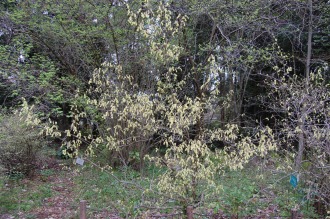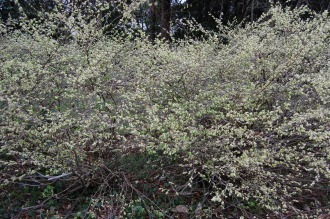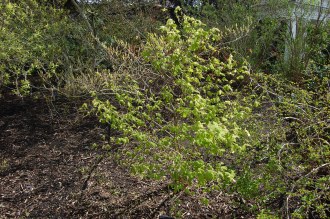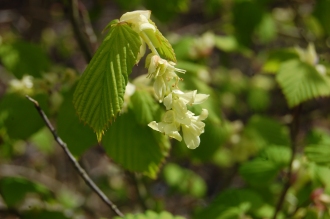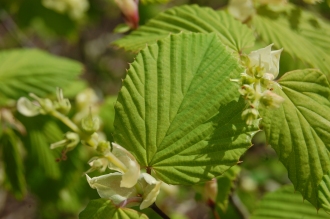Position: Partial shade
Flowering period: Spring
Soil: Moist, well drained, acid
Eventual Height: 2m
Eventual Spread: 2.5m
Hardiness: 6b, 7a, 7b, 8a, 8b, 9a, 9b
Family: Hamamelidaceae
Corylopsis spicata is a deciduous shrub with a spreading habit. Its dark green leaves are ovate with serrate margins, greyish on their undersides, up to 10cm long and 6cm across. Its fragrant pale yellow flowers have red/ purple anthers, are bell shaped, borne on short pendant racemes and appear before its leaves. The fruit is a small, dry, 2 valved capsule.
Corylopsis spicata, commonly known as Spike Witch Hazel or Winter Hazel, is native to south Japan and south east China.
The etymological root of the binomial name Corylopsis is derived from the Greek korylos meaning Hazel and oyis meaning ‘appearance’, in reference to the leaves’ similarity to those of the Hazel. Spicata is derived from the Latin spica meaning ‘an ear of grain’, in reference to the form of its flowers.
The landscape architect may find Corylopsis spicata useful as an attractive spring flowering shrub for lightly shaded location. It prefers a sheltered location.
Ecologically, Corylopsis spicata flowers are attractive to pollinating insects.
Corylopsis spicata prefers moist, humus rich, well-drained soils. It prefers an acid pH of soil. It dislikes dry soils.
Corylopsis spicata requires little maintenance. Necessary pruning should be carried out in spring, after flowering.

